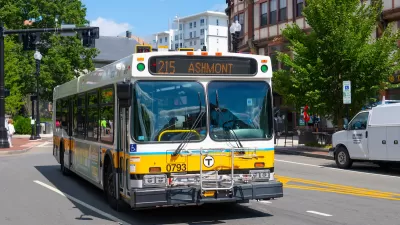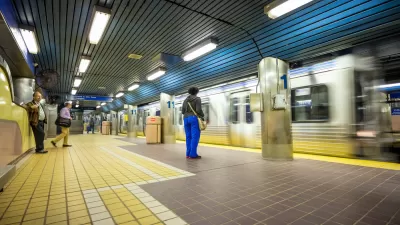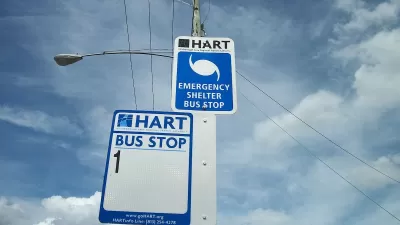Residents between 16 and 24 will have access to free public transit passes starting in September.

New Orleans residents aged 16 to 24 will have access to free passes for local public transit including Regional Transit Authority (RTA) services, reports Joni Hess for the Times-Picayune.
Residents will be able to sign up at local libraries starting in September as part of the city’s effort to improve mobility for youth. “This pilot program is funded by a $2.5 million budget allocation the City Council approved last year using American Rescue Plan Act money. RTA will receive a majority of the funding, while transit advocacy group RIDE New Orleans will get a portion for advertising and other supports.”
A report from advocacy group RIDE notes that transportation is a vital need for youth and provides valuable independence and access to jobs and social opportunities.
Cities must allocate federal pandemic relief funds by December 2024 or lose access to the funding. “By December 2026, around $110 million in in remaining ARPA funds must be spent by [New Orleans], according to federal requirements.”
FULL STORY: Young people in New Orleans can get free bus and streetcar passes this fall. Here's how.

Trump Administration Could Effectively End Housing Voucher Program
Federal officials are eyeing major cuts to the Section 8 program that helps millions of low-income households pay rent.

Planetizen Federal Action Tracker
A weekly monitor of how Trump’s orders and actions are impacting planners and planning in America.

Ken Jennings Launches Transit Web Series
The Jeopardy champ wants you to ride public transit.

California Invests Additional $5M in Electric School Buses
The state wants to electrify all of its school bus fleets by 2035.

Austin Launches $2M Homelessness Prevention Fund
A new grant program from the city’s Homeless Strategy Office will fund rental assistance and supportive services.

Alabama School Forestry Initiative Brings Trees to Schoolyards
Trees can improve physical and mental health for students and commnity members.
Urban Design for Planners 1: Software Tools
This six-course series explores essential urban design concepts using open source software and equips planners with the tools they need to participate fully in the urban design process.
Planning for Universal Design
Learn the tools for implementing Universal Design in planning regulations.
Ada County Highway District
Clanton & Associates, Inc.
Jessamine County Fiscal Court
Institute for Housing and Urban Development Studies (IHS)
City of Grandview
Harvard GSD Executive Education
Toledo-Lucas County Plan Commissions
Salt Lake City
NYU Wagner Graduate School of Public Service





























